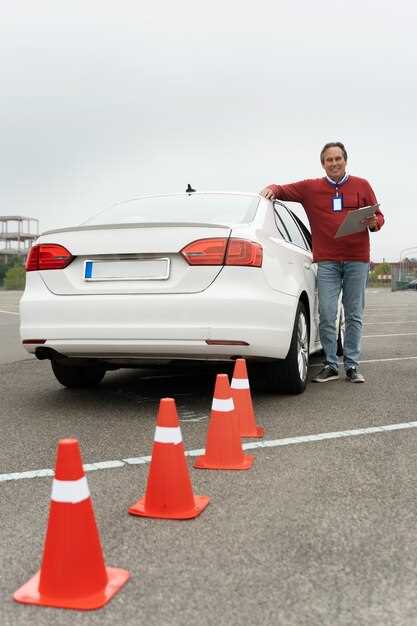
Driving is an essential part of modern life, yet it comes with inherent risks. Understanding the dynamics of the road and anticipating the behavior of other drivers are crucial for ensuring safety behind the wheel. Defensive driving techniques are designed to enhance awareness, control, and response strategies, ultimately reducing the likelihood of accidents.
In this article, we will explore the most effective defensive driving techniques that every driver should master. These methods go beyond basic traffic rules and safety tips; they emphasize proactive driving strategies that help prevent dangerous situations before they arise.
From maintaining a safe following distance to being mindful of blind spots, each technique plays a vital role in promoting road safety. Whether you are a seasoned driver or just starting out, incorporating these defensive driving practices into your regular routine can significantly enhance your overall driving experience and contribute to safer travel for everyone on the road.
Maintaining Safe Following Distances Under Varying Conditions

Safe following distances are crucial for preventing collisions and ensuring smooth traffic flow. The recommended distance generally varies depending on speed and road conditions. A good rule of thumb is to maintain a minimum of three seconds between your vehicle and the one ahead in optimal conditions. This provides adequate reaction time for sudden stops.
In adverse weather conditions such as rain, snow, or fog, it’s essential to increase your following distance. Slippery roads reduce your vehicle’s braking efficiency; therefore, extending the gap to at least four to six seconds allows for greater stopping distance and decreased risk of skidding.
When driving in heavy traffic, maintain a safe following distance by adjusting to the speed of surrounding vehicles. If vehicles suddenly change lanes or slow down, a greater buffer gives you time to react without abrupt braking. A distance of four seconds or more can be ideal in such scenarios.
Night driving also demands increased attention to following distances. Low visibility can hinder your ability to judge distances accurately. Increasing your following distance helps accommodate unexpected actions from other drivers who may not see you as clearly.
Additionally, be aware of the type of vehicle you are driving. Larger vehicles and those with trailers require longer stopping distances. Keeping a greater following distance ensures you remain in control, especially on inclines or declines where gravity plays a role in speed changes.
Adjusting your following distance according to the circumstances is a fundamental defensive driving technique. It not only enhances your safety but also contributes to the overall safety of the roadway. Always remain vigilant and ready to adapt your driving strategy based on environmental cues.
Identifying and Responding to Hazardous Road Situations
Recognizing hazardous road situations is crucial for ensuring safe travel. Drivers must remain vigilant and aware of their surroundings to quickly identify potential dangers. Common hazardous conditions include inclement weather, road construction, vehicle malfunctions, and unpredictable behavior from other drivers.
In adverse weather conditions, such as rain or snow, reduced visibility and slippery roads are major concerns. It is essential to adjust your speed accordingly, increase following distances, and use headlights to enhance visibility. In the presence of fog, reduce speed further and use low beam headlights to avoid glare.
Road construction zones present unique challenges, including sudden lane shifts, workers on the roadway, and changing speed limits. Always obey posted signs and flaggers’ directions, reduce speed, and maintain a safe distance from construction vehicles.
Vehicle malfunctions can occur unexpectedly. Regular maintenance checks can minimize the risk, but if a problem arises while driving, such as a tire blowout or engine failure, it is vital to remain calm. Steer the vehicle to the shoulder safely, turn on hazard lights, and assess the situation from a safe location.
Moreover, unpredictable behaviors from other drivers can create hazardous situations. Always be prepared for sudden stops, abrupt lane changes, and erratic driving patterns. Keeping a safe following distance and being aware of blind spots can help mitigate potential collisions.
Additionally, road signs indicating hazards, such as sharp turns, animal crossings, or steep hills, should be heeded. Adapting your driving behavior to these warnings is essential for maintaining safety.
Finally, effective communication with other road users can help prevent incidents. Use turn signals to indicate lane changes and maneuvers, and maintain eye contact with pedestrians to ensure mutual understanding.
Utilizing Mirrors and Blind Spot Checks for Enhanced Awareness

Effective use of mirrors and regular blind spot checks are crucial elements of defensive driving. By properly adjusting mirrors and frequently checking blind spots, drivers can significantly improve their situational awareness, reducing the risk of accidents and promoting safer travel.
The side mirrors should be adjusted to minimize blind spots by angling them outward. This allows drivers to have a wider view of the road and surrounding vehicles. A useful method is the “seven-point mirror check,” which includes a comprehensive adjustment of the rearview and side mirrors, ensuring they provide maximum visibility of approaching vehicles from various angles.
Blind spots are areas around a vehicle that are not visible through mirrors. To ensure complete awareness, drivers should perform shoulder checks before changing lanes or merging. This involves briefly turning the head to look directly into the blind spot, allowing for a thorough assessment of any vehicles or obstacles that may not appear in the mirrors.
Incorporating these techniques into regular driving habits enhances overall awareness and helps in anticipating the movements of other road users. Consistent practice of mirror adjustments and blind spot checks ensures that drivers remain aware of their surroundings, ultimately facilitating safe travel and preventing potential collisions.
Moreover, it is essential to be aware that blind spots can vary depending on the size and type of vehicle. Larger vehicles such as trucks have more extensive blind spots, making it even more necessary for drivers to be vigilant. By understanding the unique characteristics of different vehicles, drivers can adapt their awareness strategies accordingly.
In summary, mastering mirror use and consistently checking blind spots are vital defensive driving techniques. By implementing these practices, drivers enhance their awareness on the road, contributing to a safer driving experience for themselves and others.





